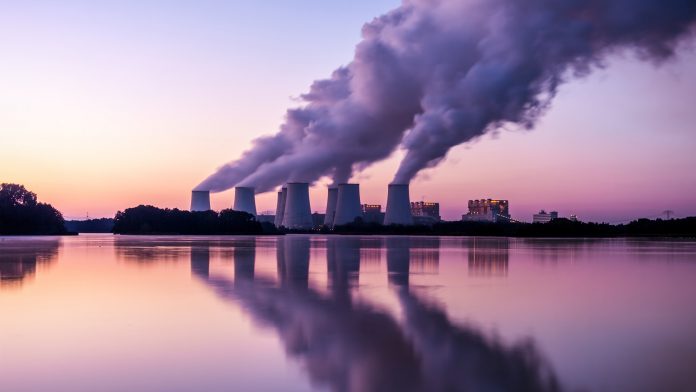Researchers at the University of Colorado Boulder have developed a novel method that could result in cheaper and more efficient carbon capture and storage.
The new tool established by the researchers could revolutionise the way that we capture carbon – and other heat trapping gases – from the atmosphere and how we convert them into useful substances such as fuel or building materials.
Scaling up advanced carbon capture and storage technology like this may prove vital for reducing global warning this century to 1.5 °C above pre-industrial temperatures, as well as resisting the devastating effects of global climate change.
The researchers’ methods and findings have been published in the journal iSCIENCE.
Identifying candidates for carbon capture
The technique works by calculating just how solid the bond is between carbon dioxide and the molecule that it traps. It is possible to apply this electrochemical verdict to any molecule that is chemically disposed to bind with carbon dioxide, enabling scientists to distinguish appropriate molecular contenders with which to capture carbon dioxide from everyday air.
“The Holy Grail, if you will, is to try to inch toward being able to use binders that can grab carbon dioxide from the air [around us], not just concentrated sources,” explained Oana Luca, who is the co-author of the study and an Assistant Professor of chemistry.
“Determining the strength of binders allows us to figure out whether the binding will be strong or weak and identify candidates for future study for direct carbon capture from dilute sources.”
Eradicating carbon capture from the atmosphere
The aim of carbon capture and storage technology is to eliminate carbon dioxide from the atmosphere and store it securely for centuries, or even millennia.
Though this method has been utilised in the US since the 1970s, at present it captures and stores only 0.1% of global carbon emissions that are produced annually. In order to assist in reaching carbon emissions targets laid out by the Intergovernmental Panel on Climate Change (IPCC), carbon capture and storage would have to enormously expand in scale by 2050.
Modern carbon capture facilities across the world currently depend on capturing carbon dioxide from a concentrated source, including emissions from power plants. Although these techniques can effectively bind a lot of carbon dioxide quickly by employing massive quantities of particular chemical binders, they are also extremely energy intensive and can be very costly.
Alternatively, utilising these electrochemical methods would free industrial facilities from being bound to concentrated sources, enabling them to be situated in a wide range of locations.
Creating chemical bonds
When atoms share electrons with other atoms, they form what is called a covalent bond. By using electricity, scientists are able to activate these bonds by utilising an electrode to deliver an electron to a molecule.
When this occurs in an imidazolium molecule, a hydrogen atom is separated, producing a gap in a carbon atom for another molecule – such as carbon dioxide – to bond with it.
One challenge is that carbon dioxide is a molecule that is unreactive to creating new bonds.
“It’s generally unreactive, and in order to react with it, you also have to bend it,” added Luca. “So we are in a chemical space that has not really been probed before, for carbon dioxide capture.”
“Just by looking at very simple molecules—molecules that we can make, molecules that we can modify— we can obtain a map of the energetics for electrochemical carbon capture. It is a small leap for now, but possibly a big leap down the line,” concluded Luca.









